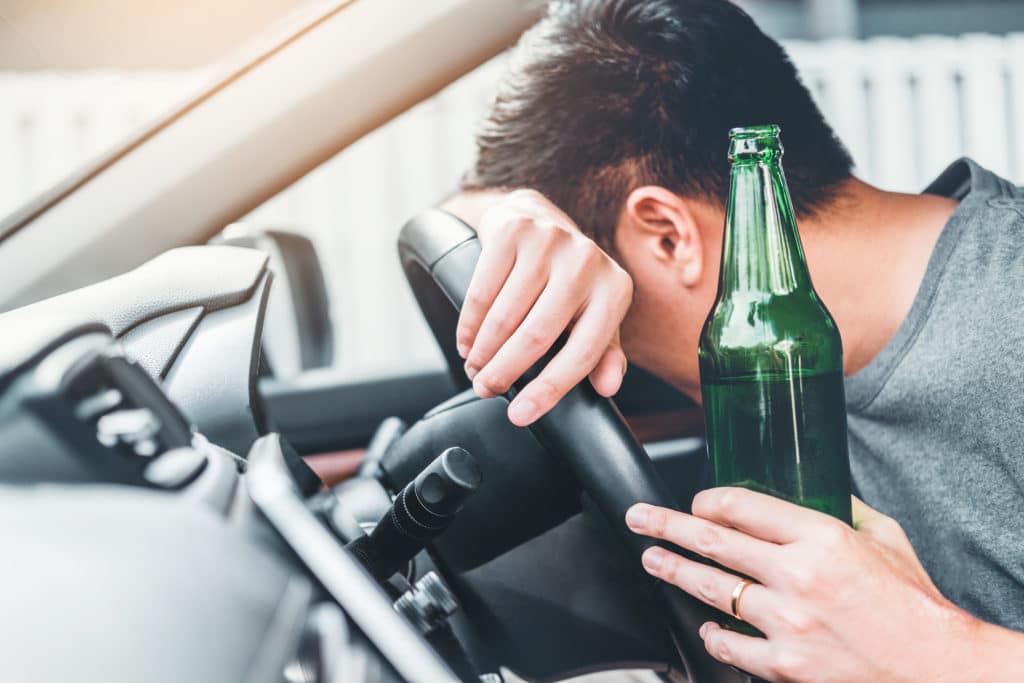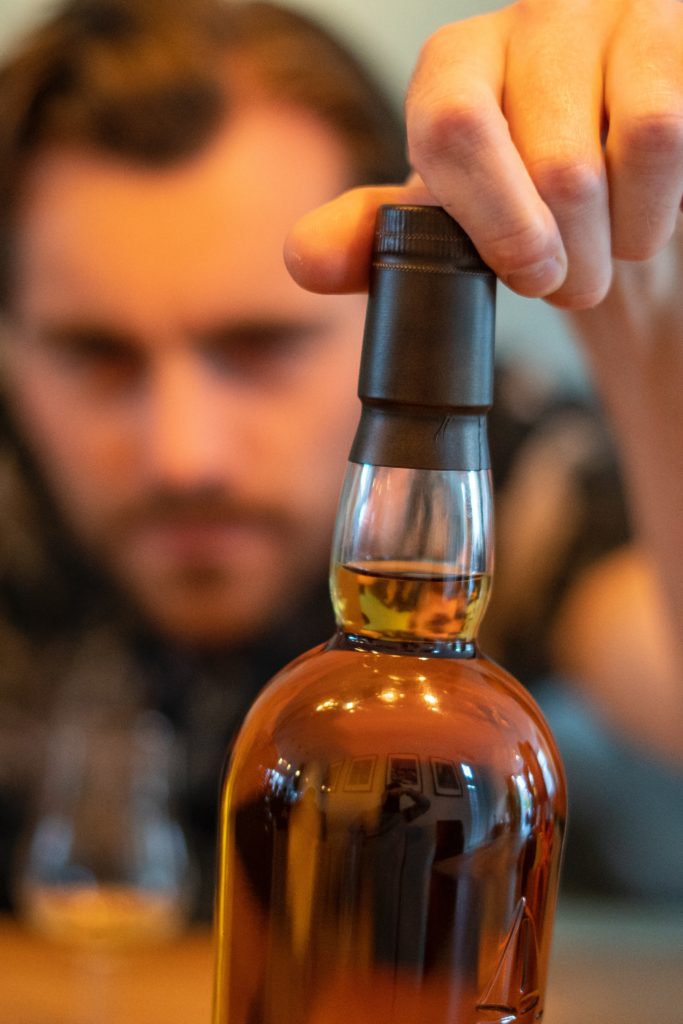What is blood alcohol content?
Blood alcohol content (BAC) is a measurement of the percentage of alcohol that’s in your bloodstream after you’ve been drinking. Your BAC, rather than the exact amount of alcohol you’ve consumed, will determine the effects the alcohol will have on you. In all states, the legal limit to drive is any number above .08.
As the blood alcohol content increases, so do the level of alcohol-related impairment you will experience. While a breathalyzer gives fast results and is often used by police officers who suspect that an individual has been driving while drunk, it is not as accurate as measuring the amount of alcohol in your blood.
How BAC Is Calculated?
To calculate the blood alcohol content, the amount of alcohol in the bloodstream is measured in milligrams (mg) of alcohol per 100 milliliters (ml) of blood. It is usually expressed as a decimal such as 0.08 or 0.15. For example, a BAC of 0.10% means that an individual’s blood supply contains one part alcohol for every 1,000 parts of blood.

How BAC Affects Impairment
The Centers for Disease Control and Prevention provides the following chart which illustrates how alcohol consumption and the blood alcohol content can impact behavior, judgment, physiology, and driving ability. There are many reports, however, of patients who have high blood alcohol content levels but who show minimal behavioral deficits on simple observation due to the tolerance that develops with chronic use.
| BAC | Standard Drink Equivalent | Typical Effects | Predicted Effects on Driving |
|---|---|---|---|
| 0.02% | ~2 alcoholic drinks | Some loss of judgment, relaxation, slight body warmth, altered mood | The decline in visual functions (rapid tracking of moving target) and ability to perform two tasks at the same time (divided attention) |
| 0.05% | ~3 alcoholic drinks | Exaggerated behavior, loss of small-muscle control (e.g., focusing your eyes), impaired judgment, lowered alertness, the release of inhibition | Reduced coordination, reduced ability to track moving objects, difficulty steering, reduced response to emergency driving situations |
| 0.08% | ~4 alcoholic drinks | Poor muscle coordination (e.g., balance, speech, vision, reaction time, hearing), difficulty detecting danger, impaired judgment, self-control, reasoning, and memory | Loss of concentration, short-term memory loss, impaired speed control, reduced information processing capability (e.g., signal detection, visual search), impaired perception |
| 0.10% | ~4 alcoholic drinks | Clear deterioration of reaction time and control, slurred speech, poor coordination, slowed thinking | Reduced ability to maintain lane position and brake appropriately |
| 0.15% | ~7 alcoholic drinks | Far less muscle control than normal, the potential for vomiting, major loss of balance | Substantial impairment in vehicle control, attention to driving task, and visual and auditory processing |
The number of drinks listed represents the approximate amount of alcohol that a 160-pound man would need to drink in one hour to reach the listed blood alcohol content in each category. A standard drink is equal to 14 grams (0.6 ounces) of pure alcohol. Generally, this amount of pure alcohol is found in:
- 12 ounces of beer (5% alcohol content)
- 8 ounces of malt liquor (7% alcohol content)
- 5 ounces of wine (12% alcohol content)
- 1.5 ounces or a “shot” of 80-proof (40% alcohol content) distilled spirits or liquor (e.g., gin, rum, vodka, whiskey)
Your blood alcohol level results may be given in different ways, including the percentage of blood alcohol content (BAC). Typical results include:
- Sober: 0.0% BAC
- Legally intoxicated: .08% BAC
- Very impaired: .08–0.40% BAC. You may have difficulty walking and speaking. Other symptoms may include confusion, nausea, and drowsiness.
- At risk for serious complications: Above .40% BAC. An individual with this blood alcohol level may be at risk for coma or death.
A blood alcohol test is only accurate within 6 to 12 hours after your last drink. If you have concerns about your results, you may want to talk to a health care provider and/or a lawyer.

What is a blood alcohol test?
A blood alcohol test measures the level of alcohol in your blood. Most people are more familiar with the breathalyzer, a test often used by police officers on people suspected of drunk driving. While a breathalyzer gives fast results, it is not as accurate as measuring alcohol in the blood.
Alcohol, also known as ethanol, is the main ingredient of alcoholic drinks such as beer, wine, and liquor. When you have an alcoholic drink, it is absorbed into your bloodstream and processed by the liver. Your liver can process about one drink an hour. One drink is usually defined as 12 ounces of beer, 5 ounces of wine, or 1.5 ounces of whiskey.
If you are drinking faster than your liver can process the alcohol, you may feel the effects of drunkenness, also called intoxication. These include behavioral changes and impaired judgment. The effects of alcohol can vary from person to person, depending on a variety of factors such as age, weight, gender, and how much food you ate before drinking.
What is it used for?
A blood alcohol test may be used to find out if you:
- Have been drinking and driving: In the United States, .08 percent blood alcohol level is the legal alcohol limit for drivers who are aged 21 and over. Drivers younger than 21 are not allowed to have any alcohol in their system when driving.
- Are legally drunk: The legal alcohol limit for drinking in public varies from state to state.
- Have been drinking while in a treatment program that prohibits drinking.
- Have alcohol poisoning: a life-threatening condition that happens when your blood alcohol level gets very high. Alcohol poisoning can seriously affect basic body functions, including breathing, heart rate, and temperature.
Teens and young adults are at higher risk for binge drinking, which can cause alcohol poisoning. Binge drinking is a pattern of drinking that raises the blood alcohol level within a short period of time. Though it varies from person to person, binge drinking is usually defined as four drinks for women and five drinks for men in a two-hour period. Young children may get alcohol poisoning from drinking household products that contain alcohol, such as mouthwash, hand sanitizer, and certain cold medicines.
Key Points about blood alcohol content
- The weight of a person greatly affects the distribution of alcohol throughout the body. The smaller the person, the less room for alcohol to distribute itself.
- Generally, men can handle more alcohol than women. This is because women are usually smaller, have more body fat and have lower total body water content than men. Also, a woman’s ability to metabolize alcohol can be affected by her menstrual cycle due to higher levels of estrogen. All of this contributes to higher concentrations of alcohol in a woman’s system even if she is drinking the same amount as a man.
- Alcohol is a depressant. Any illegal, prescription or over the counter drug is likely to react with alcohol and may increase intoxication or negative effects.
- Your stomach lining absorbs alcohol directly into your blood stream. Food slows down that absorption of alcohol.
- Diluting alcohol with water or juices reduces the volume of alcohol in your bloodstream. Drinking straight alcohol or alcohol mixed with carbonated beverages speeds up absorption.
- If a person drinks faster than one drink per hour, the alcohol simply stays in the body, waiting its turn to be metabolized. The result is increasing levels of intoxication.
- A person’s BAC can continue to rise even while he or she is passed out. Even after a person stops drinking, alcohol in the stomach and intestine continues to enter the bloodstream and circulate throughout the body.

- Rapid binge drinking is especially dangerous because the victim can ingest a fatal dose before becoming unconscious or exhibiting many of the other signs of alcohol poisoning.
- Combining alcohol with energy drinks may give people the “sensation” of reduced alcohol effects but does not alter BAC (may not feel as drunk as you really are).
- If you choose to drink and want a pleasurable and less risky experience, you need to drink less, drink slowly, and keep your BAC under a .06.
- Only time can lower your BAC. Coffee, cold showers and runs around the block will just leave you alert, wet, and out of breath but still drunk.
- Tolerance, a term meaning that after continued drinking, increasing amounts of alcohol are necessary to produce the same effect, does not have an effect on the actual BAC.
Chart of Legal Blood Alcohol Limit By State
While 0.08 is the BAC level that will lead to a DUI, DUII, or DWI drinking while driving charges, there are zero-tolerance plus enhanced penalty BAC levels that differ from state to state. Likewise note that fines, fees, and regulations are distinct in each state. If you have a DUI in California you may not undergo the identical procedure and fees when charged for a DUI. There are also various levels of conviction that are often specified by the scope of drunk driving accidents.
| State | Per-se BAC Level | Zero Tolerance BAC Level | Enhanced Penalty BAC Level* |
| Alabama DUI | 0.08 | 0.02 | 0.15 |
| Alaska DUI | 0.08 | 0.00 | 0.15 |
| Arizona DUI | 0.08 | 0.00 | 0.15 |
| Arkansas DWI | 0.08 | 0.02 | 0.15 |
| California DUI | 0.08 | 0.01 | 0.15 |
| Colorado DUI | 0.08 | 0.02 | 0.17 |
| Connecticut OWI | 0.08 | 0.02 | 0.16 |
| Delaware DUI | 0.08 | 0.02 | 0.16 |
| DC DUI | 0.08 | 0.00 | 0.20 |
| Florida DUI | 0.08 | 0.02 | 0.20 |
| Georgia DUI | 0.08 | 0.02 | 0.15 |
| Hawaii DUI | 0.08 | 0.02 | N/A |
| Idaho DUI | 0.08 | 0.02 | 0.20 |
| Illinois DUI | 0.08 | 0.00 | 0.16 |
| Indiana DUI | 0.08 | 0.02 | 0.15 |
| Iowa OWI | 0.08 | 0.02 | 0.15 |
| Kansas DUI | 0.08 | 0.02 | 0.15 |
| Kentucky DUI | 0.08 | 0.02 | 0.18 |
| Louisiana DWI | 0.08 | 0.02 | 0.15 |
| Maine OUI | 0.08 | 0.00 | 0.15 |
| Maryland DUI | 0.08 | 0.00 | 0.15 |
| Massachusetts OUI | 0.08 | 0.02 | 0.20 |
| Michigan DWI | 0.08 | 0.00 | 0.17 |
| Minnesota DWI | 0.08 | 0.00 | 0.20 |
| Mississippi DUI | 0.08 | 0.02 | N/A |
| Missouri DWI | 0.08 | 0.02 | 0.15 |
| Montana DUI | 0.08 | 0.02 | 0.16 |
| Nebraska DUI | 0.08 | 0.02 | 0.18 |
| Nevada DUI | 0.08 | 0.02 | 0.18 |
| New Hampshire DUI | 0.08 | 0.02 | 0.16 |
| New Jersey DWI | 0.08 | 0.01 | 0.15 |
| New Mexico DUI | 0.08 | 0.02 | 0.16 |
| New York DWI | 0.08 | 0.02 | 0.18 |
| North Carolina DWI | 0.08 | 0.00 | 0.16 |
| North Dakota DUI | 0.08 | 0.02 | 0.18 |
| Ohio DUI | 0.08 | 0.02 | 0.17 |
| Oklahoma DUI | 0.08 | 0.00 | 0.15 |
| Oregon DUI | 0.08 | 0.00 | 0.15 |
| Pennsylvania DUI | 0.08 | 0.00 | 0.16 |
| Rhode Island DUI | 0.08 | 0.02 | 0.15 |
| South Carolina DUI | 0.08 | 0.02 | 0.15 |
| South Dakota DUI | 0.08 | 0.02 | 0.17 |
| Tennessee DUI | 0.08 | 0.02 | 0.20 |
| Texas DWI | 0.08 | 0.00 | 0.15 |
| Utah DUI | 0.08 | 0.00 | 0.16 |
| Vermont OWI | 0.08 | 0.02 | 0.16 |
| Virginia DUI | 0.08 | 0.02 | 0.15 |
| Washington DUI | 0.08 | 0.02 | 0.15 |
| West Virginia DUI | 0.08 | 0.02 | 0.15 |
| Wisconsin DUI | 0.08 | 0.00 | 0.17 |
| Wyoming DUI | 0.08 | 0.02 | 0.15 |
Reclaim Your Life From Alcoholism
We Level Up California can provide to you, or someone you love, the tools to recover from alcoholism with professional and safe detox and treatment. Feel free to call us to speak with one of our counselors. We can inform you about this condition by giving you relevant information. Our specialists know what you are going through. Please know that each call is private and confidential.